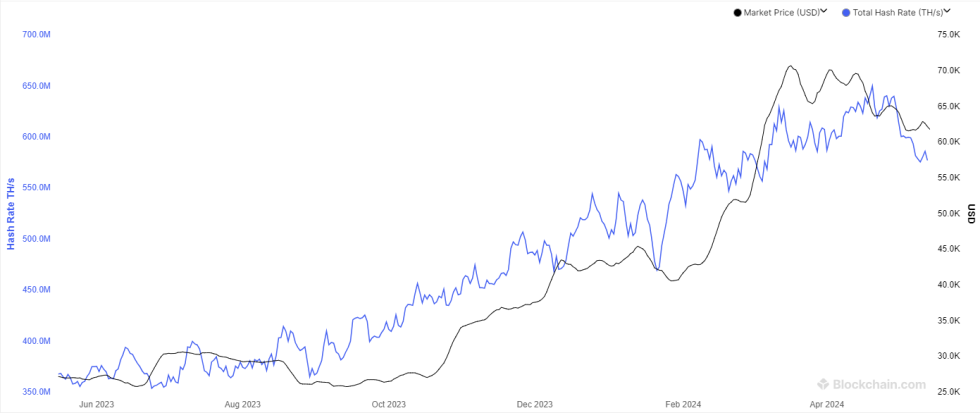
On-chain data shows the Bitcoin mining hashrate has registered a decrease of 11% recently as miner profitability has dropped to a 3-year low.
Bitcoin Miners Haven’t Been Under This Much Stress In 3 Years
As pointed out by CryptoQuant community manager Maartunn in a post on X, Bitcoin miners are being significantly underpaid right now. The indicator of relevance here is the “miner profit/loss sustainability,” which basically tells us whether the miner revenues are fair or not currently.
Here is the chart shared by the analyst that shows the trend in this BTC metric over the last few years:
The value of the metric seems to have been quite negative in recent weeks | Source: @JA_Maartun on X
From the chart, it’s visible that the Bitcoin miner profit/loss sustainability had been at positive levels earlier when the rally towards the new all-time high had occurred.
Miners make their income from two sources: the block rewards that they receive for solving blocks on the network and the transaction fees that they get as compensation for handling individual transfers.
During rallies, transfer fees can spike due to high network activity and block rewards become more valuable as a result of the rising BTC price. As such, it’s not surprising that the profitability of these chain validators was at notable levels during the earlier surge.
Recently, however, the indicator’s value has plunged deep into the negative territory, implying miners have become extremely underpaid. Bitcoin has gone through some bearish price action in this period, but the lower spot value isn’t the only reason that miner financials have now come under stress.
The much-anticipated Halving that occurred last month would be the much bigger factor at play here. During this event, BTC’s block rewards were permanently slashed in half, so it’s easy to see how it would affect mining economics.
Interestingly enough, the Halving day itself saw pretty high revenues for miners, with the miner profit/loss sustainability shooting into the overpaid territory, as is visible by the lone spike in the chart. This was a result of the arrival of Runes on the network.
This new protocol, which allows users to mint fungible tokens on the Bitcoin network, saw immediate popularity, and the resulting transaction activity sent blockchain fees soaring. However, the hype couldn’t last for too long, though, and transaction fees have once again returned back to lower levels.
The halved rewards combined with the relatively low fees are why miner profitability has taken such a hit. “This is likely to cause substantial strain, especially for less efficient miners,” notes Maartunn.
It would appear that some of the miners under stress have already started pulling out, as the Bitcoin hashrate, a measure of the computing power connected to the network by the miners, has seen a decline of 11% in its 7-day average chart since the all-time high set alongside the Halving.

Looks like the value of the metric has been declining recently | Source: Blockchain.com
Miners can now only hope for the BTC price to see enough surge so as to offset the revenue decrease caused by the Halving, or for the transaction fees to perhaps see another boom.
BTC Price
Bitcoin has seen yet another recovery rally fizzle out as the asset’s price has dropped to $61,700 after having returned back above $63,000 yesterday.
The price of the coin has continued to consolidate over the last few days | Source: BTCUSD on TradingView



















